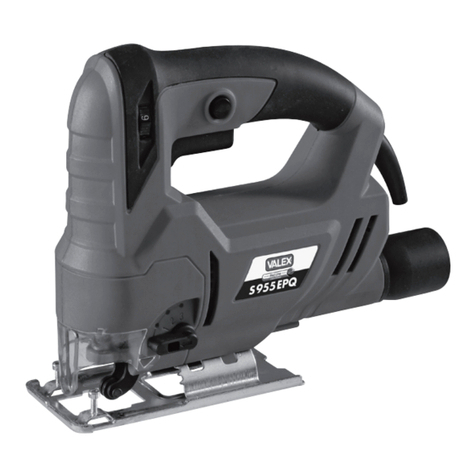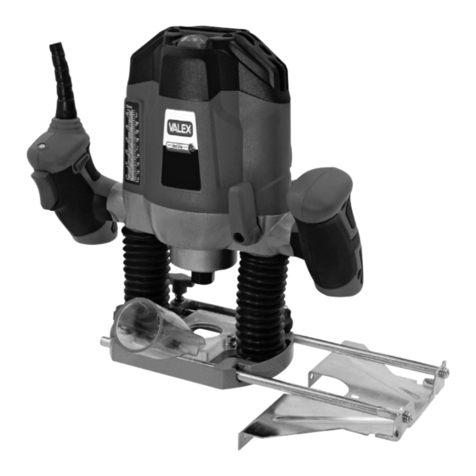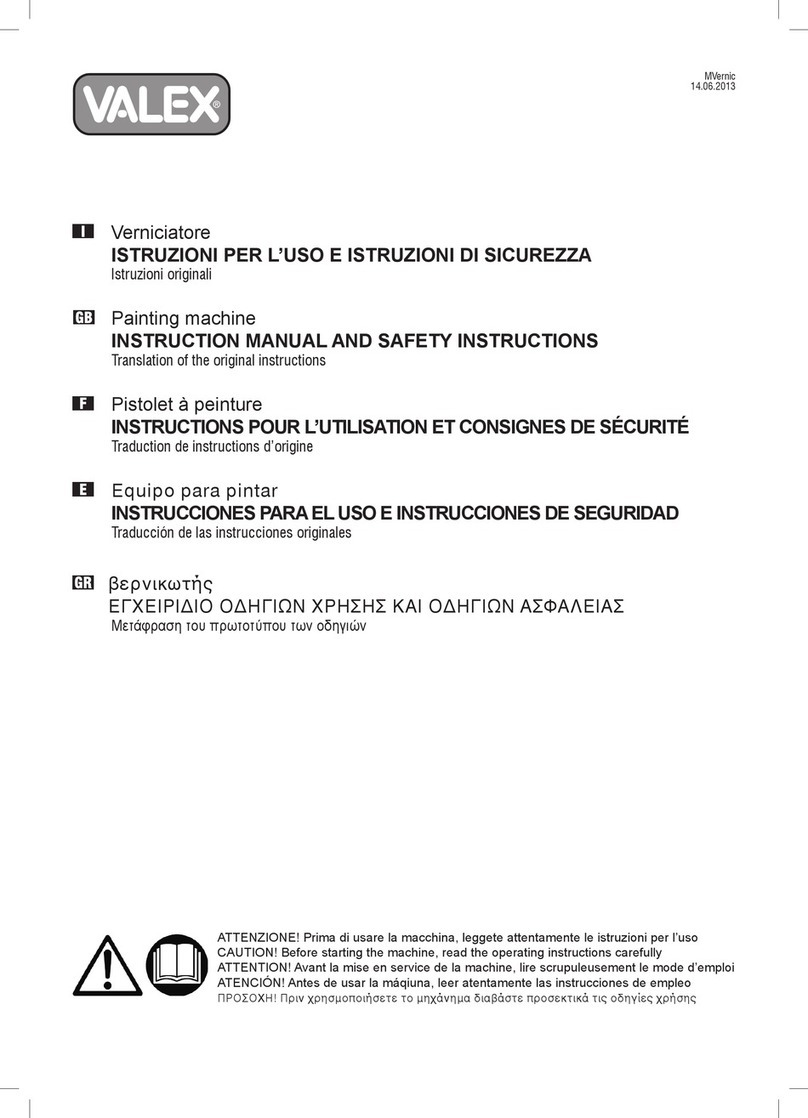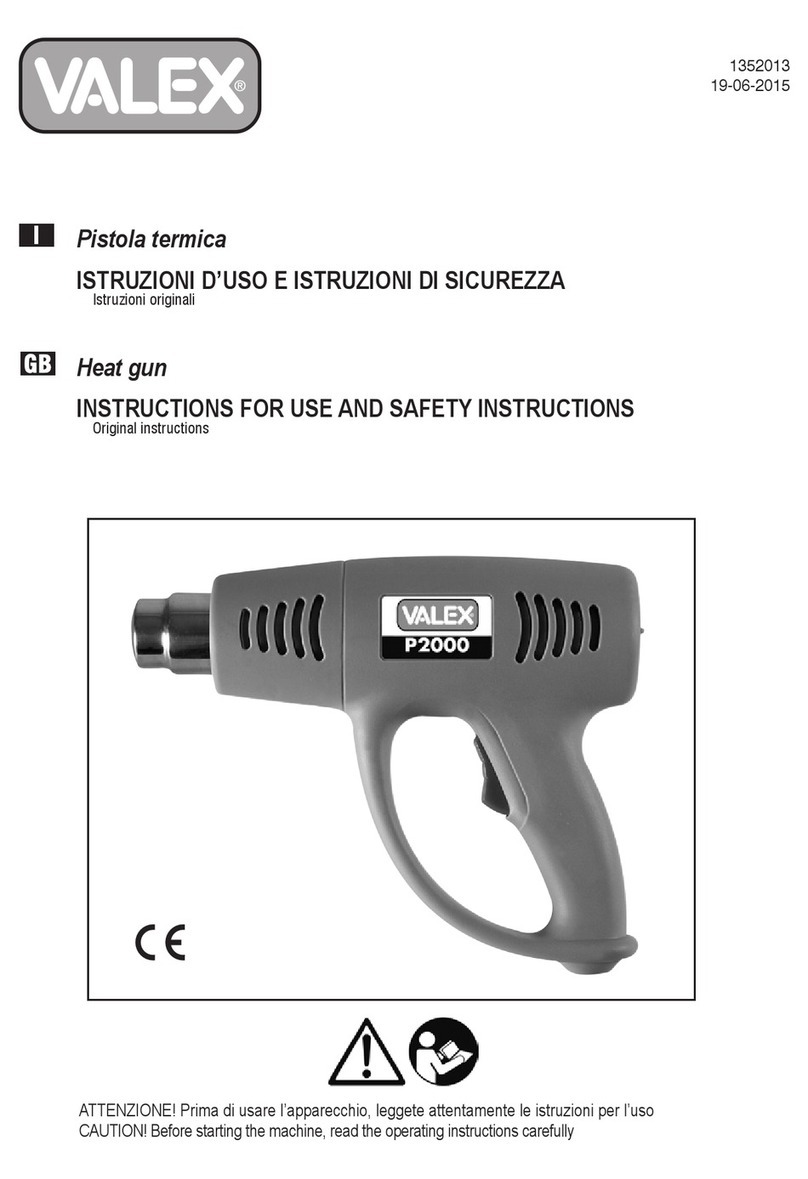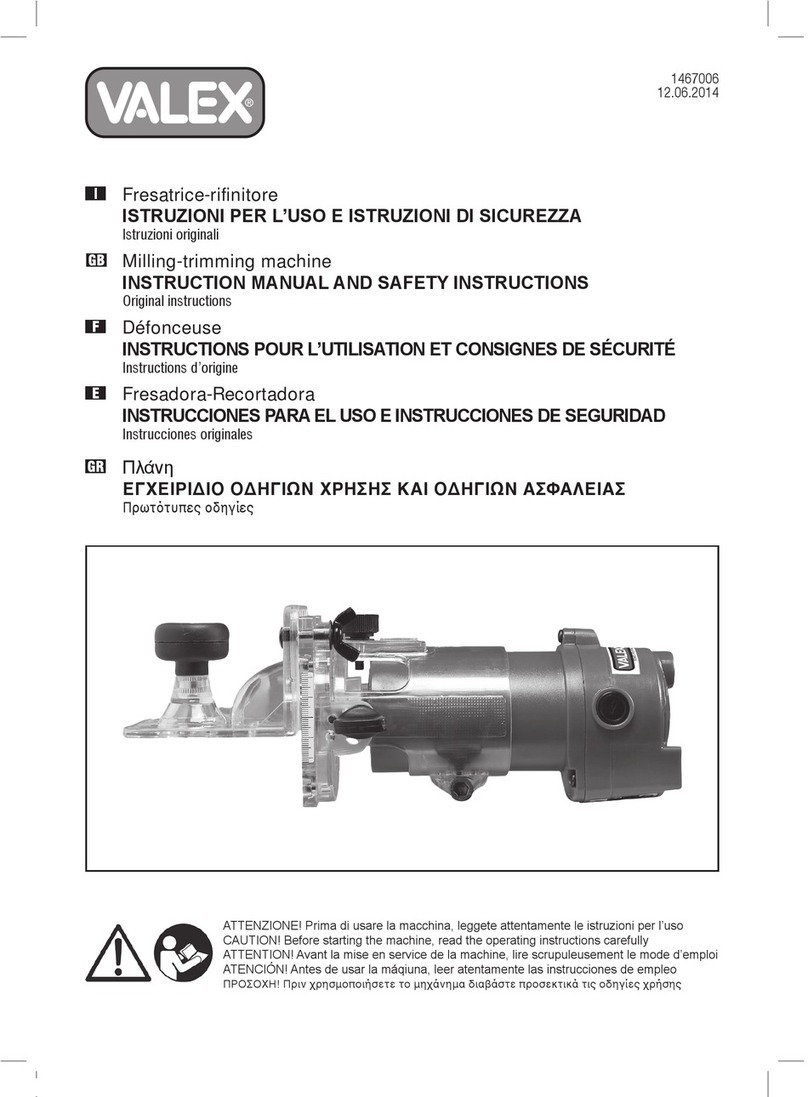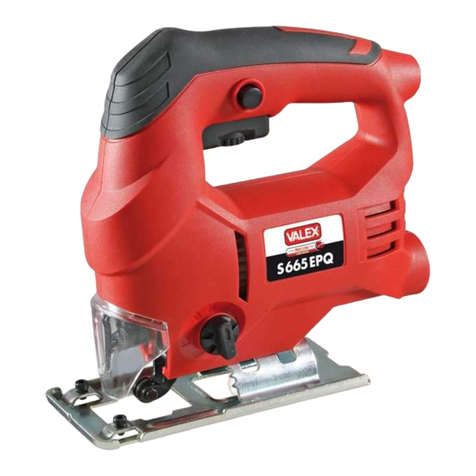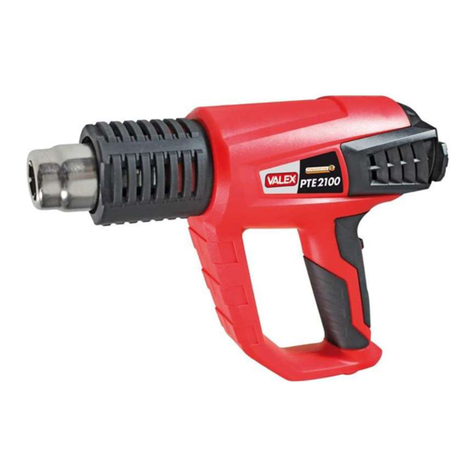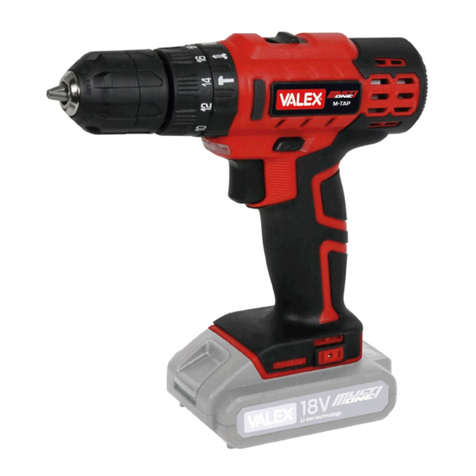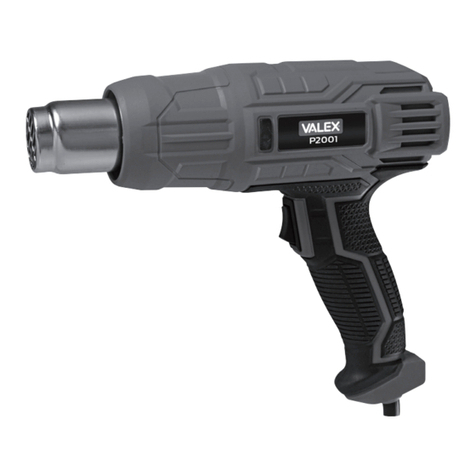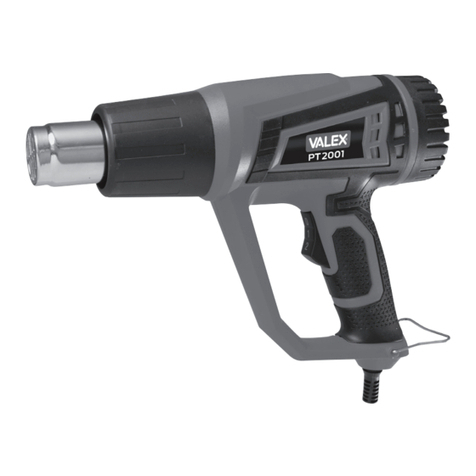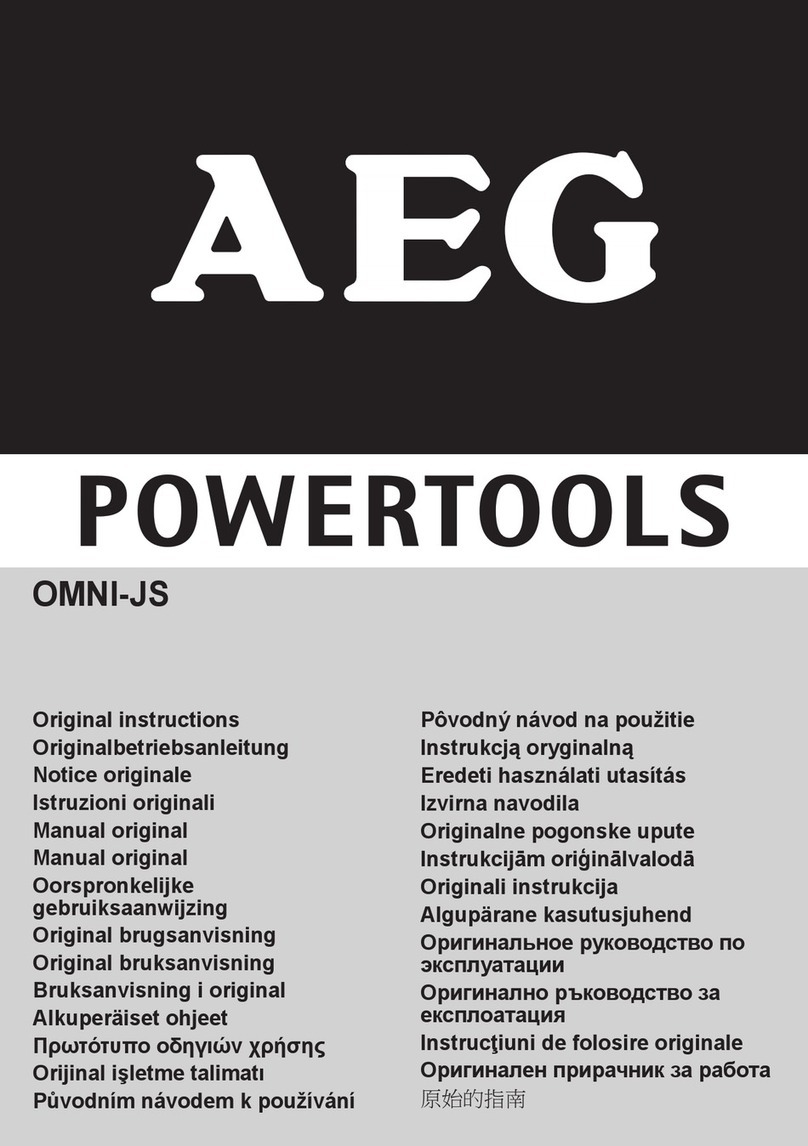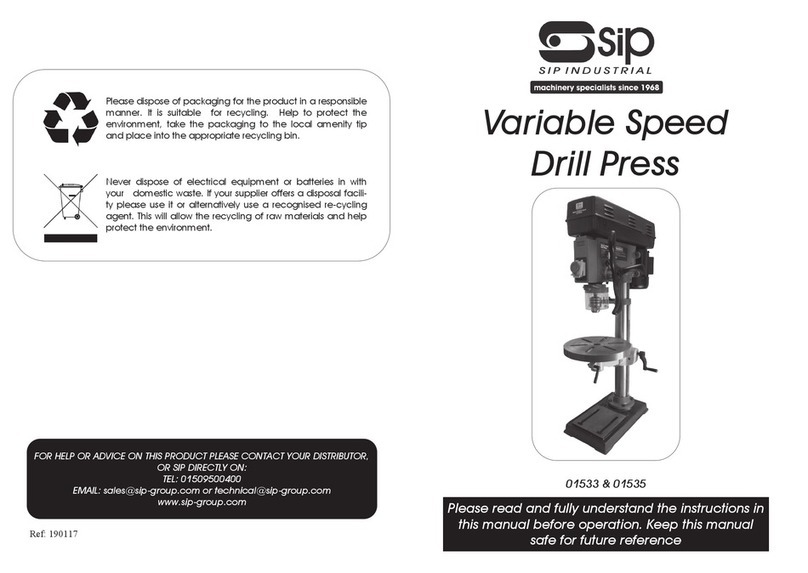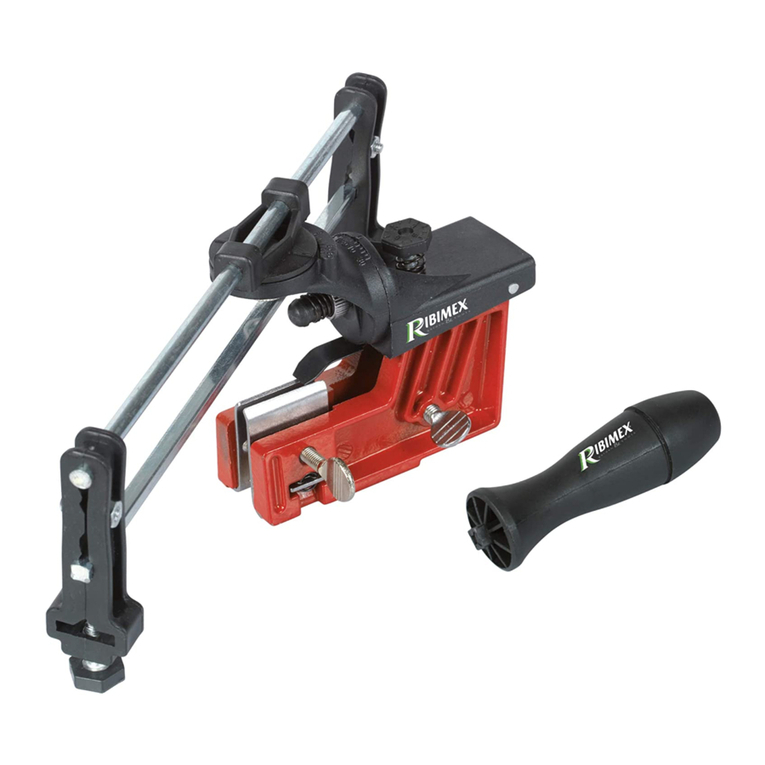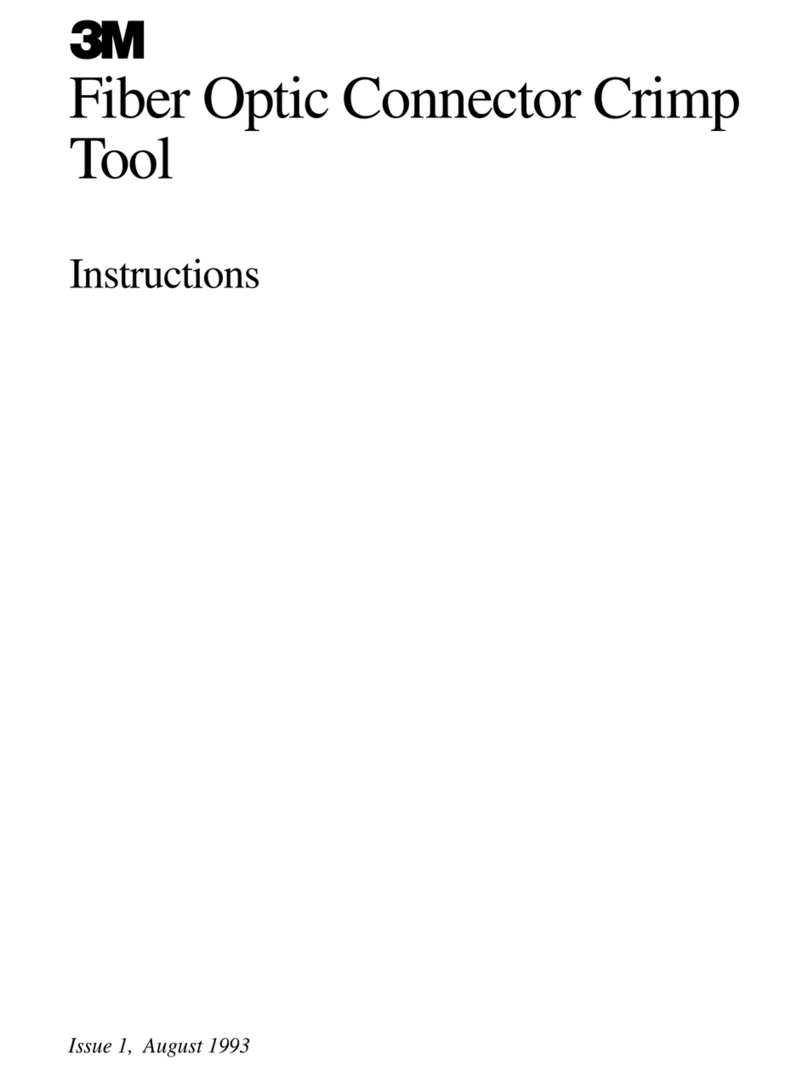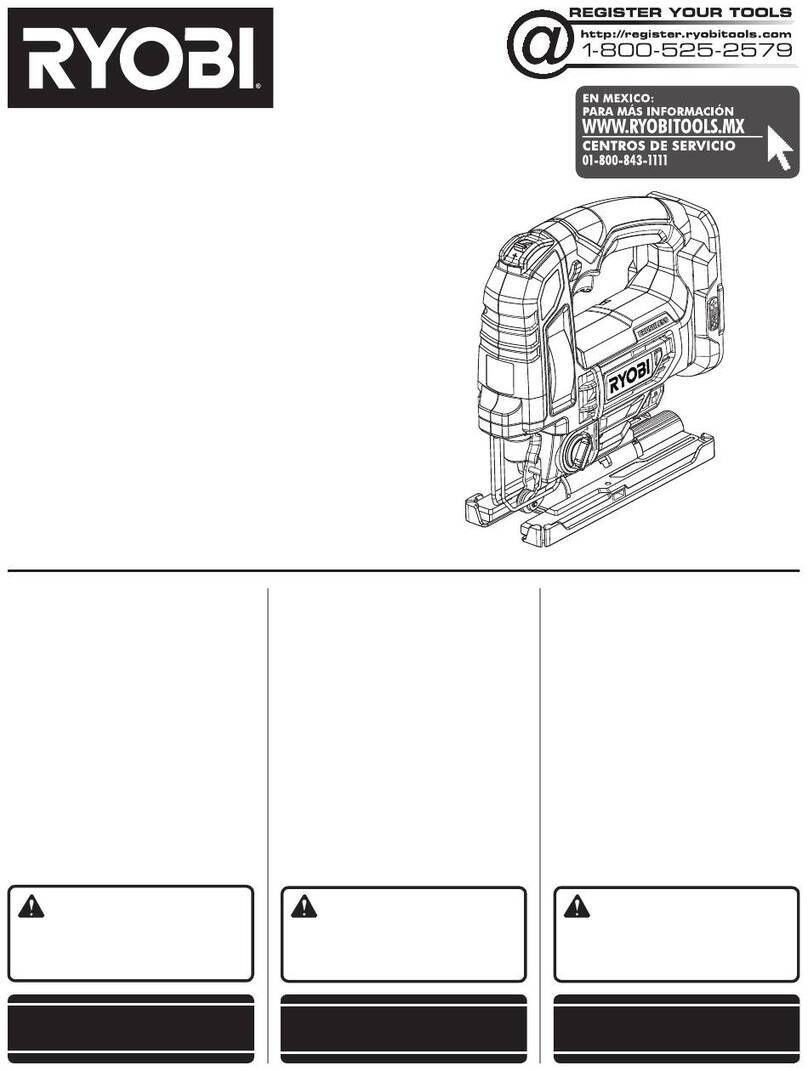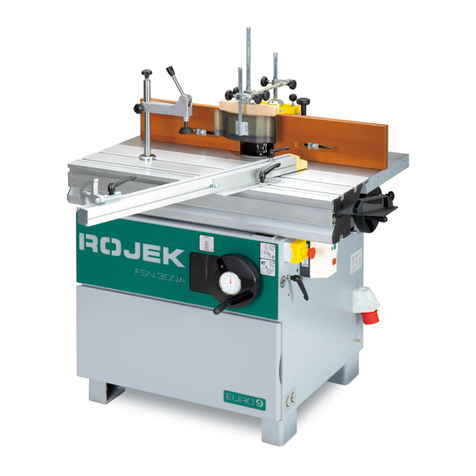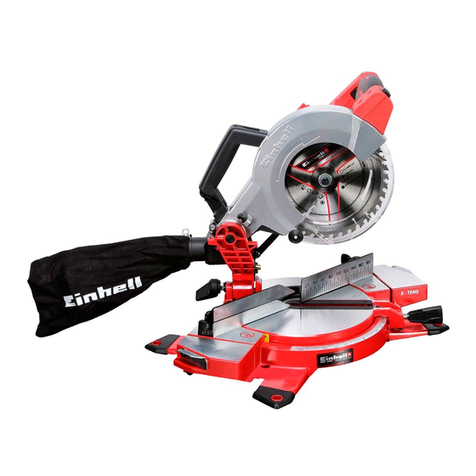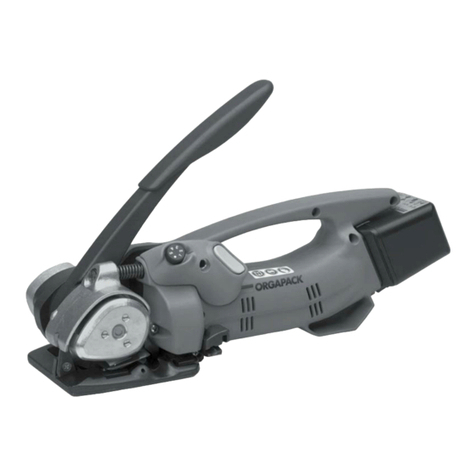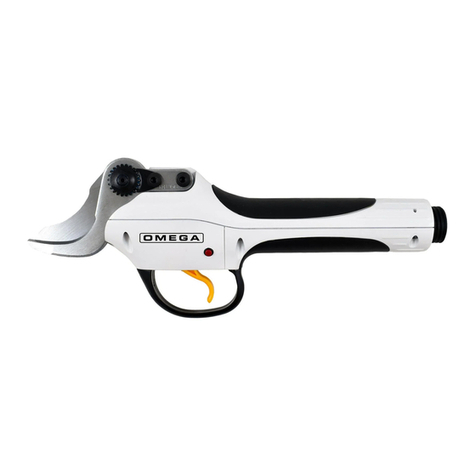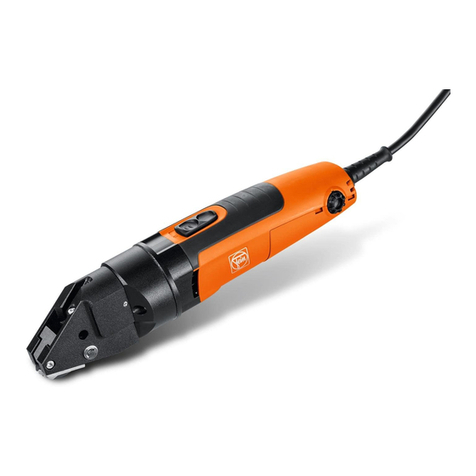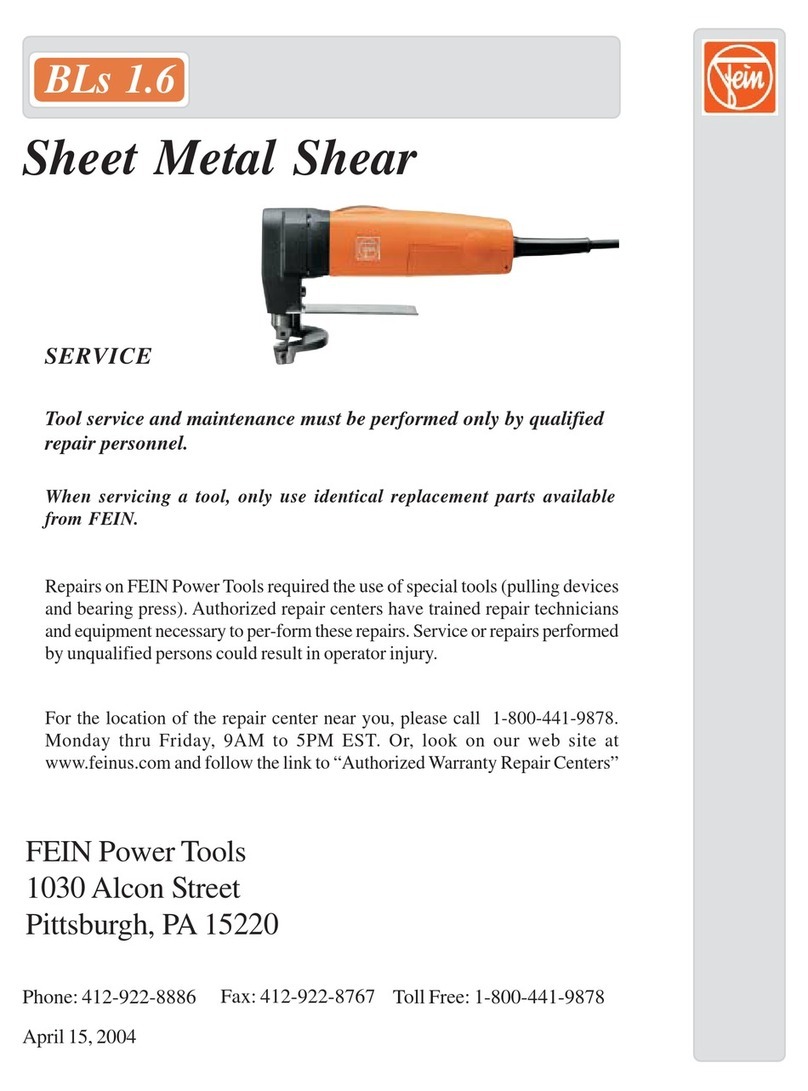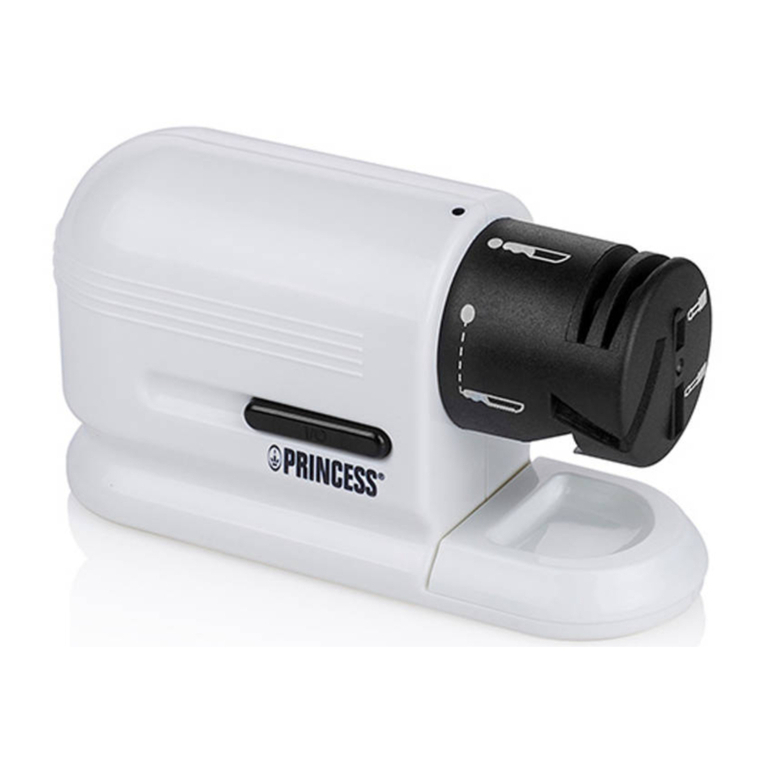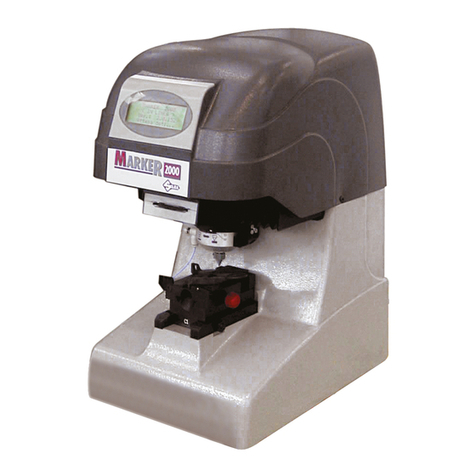
- 8 -
Regolazione velocità di taglio:
Azionate la rotellina (Fig.A pos.3) seguendo le
indicazioni poste al suo fianco.
Impostate la velocità più idonea al lavoro da
eseguire facendo prima delle prove in base al
materiale da lavorare e al tipo di fresa utilizzato.
Ricordatevi che, lavorando con la giusta velo-
cità di taglio e di avanzamento, otterrete una
lavorazione migliore e una maggior durata della
fresa stessa.
MONTAGGIO E REGOLAZIONE ACCESSORI
REGOLAZIONE PROFONDITÁ DI TAGLIO
Con macchina non in funzione, scollegata dalla
rete elettrica e con la fresa desiderata installata
sul mandrino, procedere come di seguito:
1.ruotate la torretta (Fig.A pos.19) finché il
gradino più basso si trovi in asse con l’asta di
profondità (Fig.A pos.7);
2.ruotate il volantino di fissaggio (Fig.A pos.6)
per liberare il movimento dell’asta di profondità;
2.impugnando saldamente le maniglie della
macchina ruotate la leva posteriore di blocco
per liberare il movimento verticale del corpo
macchina (Fig.A pos.5) e premete finché la
fresa sfiori la superficie da lavorare. Il fermo
di profondità dell’asta (Fig.A pos.7) si troverà
a contatto con il gradino della torretta;
3.ruotate la leva posteriore di blocco (fig.A
pos.5) e bloccare il corpo macchina;
4.ruotate il volantino di fissaggio (fig.A pos.6) e
bloccare l’asta di profondità;
5.impugnando saldamente le maniglie della
macchina ruotate la leva posteriore di blocco
per alzare il corpo macchina;
6.modificate la posizione dell’asta di profondità
più in alto rispetto alla posizione corrente della
misura pari alla profondità di passata deside-
rata. Utilizzate la scala graduata e i riferimenti
per una registrazione millimetrica di base. A se-
conda dei modelli è possibile poi effettuare una
ulteriore regolazione di precisione ruotando il
volantino posto alla sommità dell’asta graduata;
La macchina è ora pronta per l’uso. Al raggiun-
gimento della profondità di passata impostata,
il fermo di profondità dell’asta raggiunge la
superficie del gradino impedendo una ulteriore
discesa della fresa.
Può essere utile effettuare la lavorazione in più
passate, a seconda del tipo di materiale lavorato,
della profondità di passata e del grado di finitura
desiderato. Per far ciò e sufficiente, dopo aver
impostato la macchina come sopra descritto,
ruotare la torretta in corrispondenza di gradini
più alti, cui corrisponde una profondità di pas-
sata inferiore.
SOSTITUZIONE MANDRINO (Fig. C)
Vedi “Montaggio/smontaggio fresa”
ATTACCO ASPIRAZIONE TRUCIOLI (Fig. D)
Seguite le istruzioni di montaggio riportate in Fig.D.
Questo accessorio deve sempre essere mon-
tato e collegato ad un impianto di aspirazione
adeguato, provvisto di filtro.
STAFFA PER FRESATURA PARALLELA (Fig. A)
Inserite i perni della staffa (Fig.A pos.8) nei
blocchetti della base e fissateli con i volantini.
Questo accessorio permette una fresatura parallela
ad un lato di riferimento e ad una distanza stabilita.
SPINA PER FRESATURA CIRCOLARE (Fig. F)
Usate questo accessorio per eseguire fresature
circolari. Individuate il centro del cerchio da otte-
nere e, dopo avervi piantato la spina , fissate la
misura del raggio regolando la posizione della staf-
fa; bloccatela alla misura voluta con il volantino.
DISPOSITIVO COPIATORE (Fig. G)
- Seguire le istruzioni di montaggio ed uso
indicate in Fig.G.
- Questo inserto permette di eseguire copie di
sagome o profili.
- Considerare sempre che la sagoma copiata avrà
una dimensione leggermente maggiore rispetto
al campione. Tale discrepanza dipenderà anche
dal diametro della fresa che viene utilizzata.
CONSIGLI D’USO
Dopo aver letto attentamente le norme di sicu-
rezza, seguite scrupolosamente questi consigli
che vi permetteranno di ottenere il massimo
delle prestazioni dalla vostra fresatrice. Proce-
dete con calma; solo dopo aver acquisito una
buona esperienza riuscirete a sfruttare a fondo
le potenzialità dell’ utensile.
- Quando lavorate tenete saldamente la fresatric
e per le due impugnature; non lavorate mai
tenendola con una sola mano.
- Prima di proseguire nel lavoro definitivo, ese-
guite delle prove per accertarvi che l’ utensile
impiegato, la velocità di taglio e la profondità
